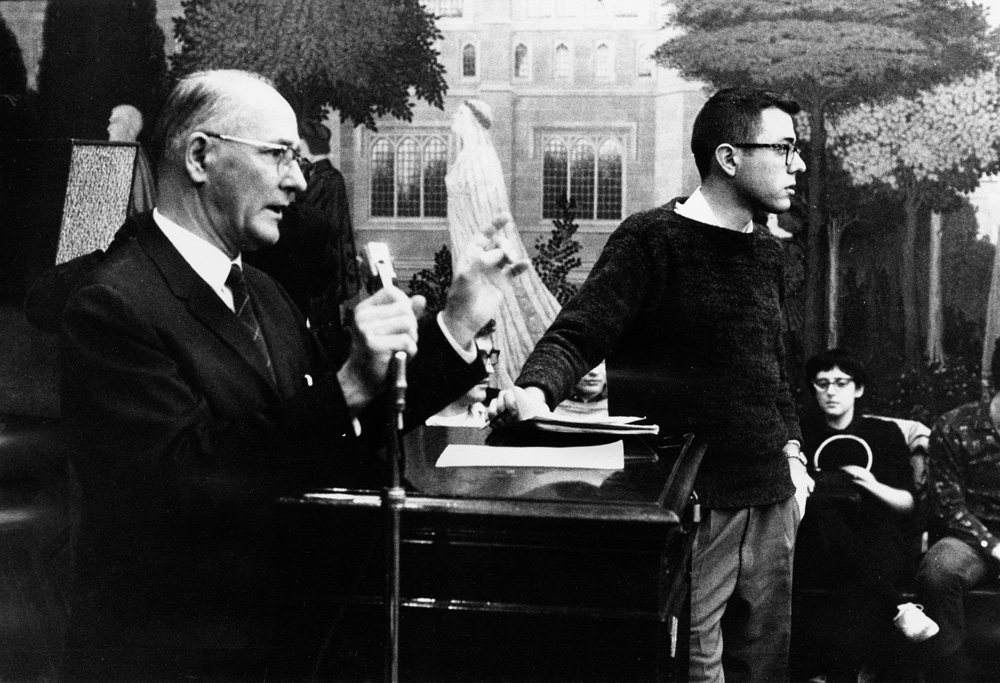The Civil Rights Movement is often remembered as a tumultuous yet transformative period in American history. It was a time when brave individuals stood up against systemic racism, demanding equality and justice for African Americans. This era was marked by significant events that served as turning points, forever altering the landscape of American society. Let’s delve into the top 15 turning points that defined the Civil Rights Movement and shaped the nation’s path toward equality.
1. Brown v. Board of Education (1954)

The Supreme Court’s ruling in Brown v. Board of Education was a monumental victory for civil rights activists. This decision declared that racial segregation in public schools was unconstitutional, challenging the long-standing “separate but equal” doctrine. The ruling was a beacon of hope for those fighting against segregation, and it inspired a wave of activism aimed at dismantling racial barriers. The Brown decision was a catalyst for change, igniting a movement that would challenge discriminatory practices across various sectors of society.
2. Montgomery Bus Boycott (1955-1956)

The Montgomery Bus Boycott was a powerful demonstration of collective action and nonviolent protest. It began when Rosa Parks refused to give up her seat to a white passenger, sparking a year-long boycott of the bus system by African Americans in Montgomery, Alabama. This boycott not only highlighted the injustices of segregation but also introduced Martin Luther King Jr. as a prominent leader in the Civil Rights Movement. The success of the boycott showed the world the strength of unity and the potential for peaceful protest to effect change.
3. Little Rock Nine (1957)

The courage of the Little Rock Nine students became a symbol of the struggle for desegregation in American schools. These nine African American students faced hostility and violence when they attempted to integrate Little Rock Central High School in Arkansas. The situation escalated to the point where President Eisenhower had to deploy federal troops to ensure their safety and uphold the law. This event highlighted the deep-rooted resistance to desegregation and underscored the federal government’s role in enforcing civil rights.
4. Sit-in Movement (1960)

The sit-in movement began with four African American college students in Greensboro, North Carolina, who sat at a whites-only lunch counter and refused to leave when denied service. This act of peaceful protest quickly spread across the country, challenging segregation in public spaces. The sit-ins were a testament to the power of nonviolent resistance and demonstrated the determination of young activists to confront racial injustice. This movement played a crucial role in raising awareness and mobilizing support for the Civil Rights Movement.
5. Freedom Rides (1961)

The Freedom Rides were organized to challenge segregation in interstate bus travel, directly confronting the Jim Crow laws that persisted in the South. Activists, both black and white, rode buses into the Deep South to test compliance with federal desegregation laws. Despite facing violent attacks and arrests, their bravery drew national attention to the ongoing struggle for civil rights. The Freedom Rides highlighted the need for federal intervention and ultimately led to stronger enforcement of desegregation laws, showcasing the power of courageous activism.
6. Birmingham Campaign (1963)

The Birmingham Campaign was a strategic effort to confront racial segregation in one of America’s most segregated cities. Led by Martin Luther King Jr. and the Southern Christian Leadership Conference, the campaign included peaceful protests, marches, and sit-ins. The violent response from local authorities, including the use of fire hoses and police dogs against demonstrators, shocked the nation and garnered widespread sympathy for the civil rights cause. This event underscored the brutality of segregation and the urgent need for reform.
7. March on Washington (1963)

The March on Washington for Jobs and Freedom was a monumental event that brought together over 250,000 people to advocate for civil rights and economic justice. It was during this march that Martin Luther King Jr. delivered his iconic “I Have a Dream” speech, calling for an end to racism and for civil and economic rights. The march was a defining moment in the movement, showcasing the unity and determination of activists from diverse backgrounds. It served as a powerful demonstration of the widespread demand for equality and justice.
8. Civil Rights Act (1964)

The passage of the Civil Rights Act was a significant legislative achievement in the fight against discrimination. This landmark law prohibited discrimination based on race, color, religion, sex, or national origin. It also aimed to end segregation in schools, workplaces, and public accommodations. The Civil Rights Act represented a major victory for activists and laid the groundwork for future legislation aimed at promoting equality. It was a testament to the power of persistent advocacy and the importance of legal protection in the struggle for civil rights.
9. Voting Rights Act (1965)

The Voting Rights Act was a crucial piece of legislation that aimed to eliminate barriers to voting for African Americans. Following the Selma to Montgomery marches, which highlighted the violent resistance faced by black voters, the Act prohibited discriminatory voting practices. This legislation significantly increased voter registration and participation among African Americans, empowering communities and transforming the political landscape. It was a pivotal step toward ensuring equal access to the democratic process and reinforcing the principles of justice and equality.
10. Watts Riots (1965)

The Watts Riots were a response to systemic racism and police brutality in Los Angeles. The six-day uprising resulted in widespread destruction and highlighted the frustrations of African Americans living in poverty. While the riots were a tragic event, they underscored the urgent need for social reform and drew attention to the ongoing struggles faced by black communities across the nation. The Watts Riots served as a stark reminder of the deep-seated issues of racial inequality and the necessity for meaningful change.
11. Black Power Movement (1960s)

The Black Power Movement emerged as a response to the limitations of the mainstream Civil Rights Movement. Advocates emphasized racial pride, self-determination, and the need for economic and political empowerment. Leaders like Stokely Carmichael and organizations such as the Black Panther Party sought to address issues of systemic oppression and inequality, shifting the focus from integration to community control and empowerment. This movement challenged traditional approaches to civil rights and inspired a broader vision of racial justice.
12. Assassination of Martin Luther King Jr. (1968)

The assassination of Martin Luther King Jr. on April 4, 1968, marked a tragic turning point in the Civil Rights Movement. King’s death sparked nationwide riots and mourning, as he was a symbol of nonviolent resistance and hope for many. His assassination highlighted the dangers faced by civil rights leaders and the ongoing struggle for justice. In the aftermath, the movement continued, but it also experienced fragmentation and a shift in leadership. King’s legacy remains a powerful reminder of the enduring fight for equality and justice.
13. Fair Housing Act (1968)

The Fair Housing Act was enacted in response to the widespread discrimination in housing practices. This legislation aimed to eliminate racial discrimination in the sale and rental of housing, providing greater access to homeownership for African Americans. The Act was a crucial step in addressing economic disparities and promoting equality in housing, although challenges in enforcement remained. It underscored the importance of legal protections in combating systemic racism and advancing civil rights.
14. Rise of Multiculturalism (1970s)

The Civil Rights Movement laid the groundwork for the rise of multiculturalism in America. As the movement evolved, it inspired other marginalized groups to advocate for their rights, including women, LGBTQ+ individuals, and Native Americans. This shift towards inclusivity and recognition of diverse identities marked a significant turning point in American social movements, broadening the scope of civil rights activism. The rise of multiculturalism reflected the ongoing struggle for equality and the importance of embracing diversity in the fight for justice.
15. Legacy of the Civil Rights Movement

The legacy of the Civil Rights Movement continues to influence contemporary social justice movements. The fight for equality and justice remains ongoing, with new generations drawing inspiration from the courage and determination of past activists. The movement’s achievements, including legal protections and increased awareness of racial issues, serve as a foundation for continued advocacy and progress toward a more equitable society. The Civil Rights Movement serves as a powerful reminder of the importance of standing up for justice and equality for all.






